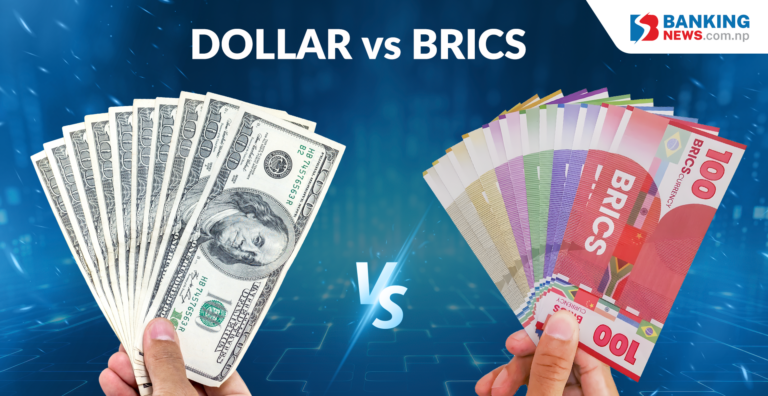Banking News – The BRICS nations have long discussed creating a new currency to challenge the US dollar’s dominance. Recently, they announced plans for a blockchain-based payment system, signaling a significant step toward economic independence. Investors should stay informed about these developments and their potential impacts.
BRICS and the Move Toward a New Currency
The BRICS bloc—originally comprising Brazil, Russia, India, China, and South Africa—has expanded to include Egypt, Ethiopia, Indonesia, Iran, and the United Arab Emirates as of 2025. These nations have explored the creation of a new reserve currency backed by a basket of their national currencies, with discussions intensifying at the 2024 BRICS Summit in Kazan, Russia. The proposed currency, tentatively called the “Unit,” could potentially be gold-backed, providing an alternative to the US dollar-dominated financial system.
A primary motivation for the BRICS currency is reducing reliance on the US dollar, which currently accounts for about 90% of global currency trading. While the US dollar has long been the preferred medium for international transactions—including nearly all oil trade—recent trends indicate a shift. By 2023, one-fifth of global oil trades were conducted in non-dollar currencies.
Geopolitical Factors Driving the Push
Key geopolitical factors contribute to the BRICS nations’ desire for financial independence. The US trade war with China and Western sanctions on Russia and Iran have incentivized these nations to seek alternatives to the US dollar. A new BRICS currency could mitigate the impact of such sanctions, providing member nations with greater economic flexibility.
However, some experts argue that uniting diverse economies under a single currency could be problematic. Concerns have been raised that the initiative might disproportionately benefit China by increasing reliance on its yuan, a situation some BRICS members may resist. For example, in 2023, when Russia sought payment in yuan for its oil exports to India, India insisted on using US dollars or rupees instead.
Will a BRICS Currency Materialize Soon?
Despite growing discussions, no definitive timeline exists for launching a BRICS currency. While leaders have expressed support, there are significant challenges to its implementation. In 2022, Russian President Vladimir Putin hinted at the creation of a “new global reserve currency,” while Brazilian President Luiz Inacio Lula da Silva questioned why the dollar remains the global standard. However, as of 2025, Brazil—holding the BRICS presidency—has stated that it has no immediate plans to advance a shared currency. Instead, the focus remains on reducing reliance on the US dollar through alternative payment systems, including blockchain technology.
Implications for the US Dollar
The introduction of a BRICS currency could impact the US dollar in several ways:
- De-dollarization: A new currency could weaken the dollar’s global dominance, reducing its demand and diminishing the effectiveness of US financial sanctions.
- Shift in Trade Dynamics: Nations may increasingly trade in alternative currencies, bypassing the US dollar in favor of regional transactions.
- Potential Economic Fallout: A weakened dollar could lead to inflationary pressures and economic instability in the US, particularly if global confidence in the dollar diminishes.
Despite these concerns, many experts believe the US dollar remains secure as the world’s primary reserve currency. The Atlantic Council’s 2024 “Dollar Dominance Monitor” report found that the dollar continues to dominate global trade, foreign reserves, and currency exchanges. Analysts at the Peterson Institute for International Economics also argue that the BRICS bloc does not pose a serious threat to the dollar’s supremacy.
Trump’s Stance on BRICS and Tariffs
Newly re-elected US President Donald Trump has taken a strong stance against BRICS economic maneuvers. He has vowed to impose strict tariffs on BRICS nations should they introduce a competing currency. His proposed 60% to 100% tariffs on Chinese imports, for example, are part of his broader “America First” agenda.
Trump has also demanded that BRICS nations commit to not creating a new currency, threatening punitive tariffs otherwise. In response, Kremlin spokesperson Dmitry Peskov argued that such threats only accelerate the trend toward de-dollarization, as more countries seek alternatives to the dollar.
BRICS and the Digital Payment Revolution
While a new BRICS currency is not imminent, efforts to establish independent financial infrastructure are well underway. The BRICS Bridge multisided payment platform, announced in 2024, aims to facilitate settlements using central bank digital currencies (CBDCs). Additionally, Project mBridge—a collaboration involving the central banks of China, Thailand, the UAE, and Hong Kong—has successfully tested a gold-backed digital currency platform for cross-border transactions.
Investor Takeaway
The possibility of a new BRICS currency introduces uncertainty in global markets. While the US dollar remains dominant, ongoing efforts by BRICS nations to establish independent financial mechanisms could reshape the international monetary landscape. Investors should monitor:
- Trends in de-dollarization and increasing use of local currencies in global trade.
- US tariff policies, which could affect global trade flows and economic growth.
- Blockchain-based financial systems, as BRICS nations develop digital payment solutions.
While the launch of a BRICS currency remains uncertain, its potential implications for the global economy, the US dollar, and international trade warrant close attention.



 About Us
About Us
Comment